SUMMARY HIGHLIGHTS
- The view of the sandbar is considered one of the “three great views” of Japan.
- Travel to Amanohashidate is covered by the JR West Kansai Wide Area Pass.
- The small fishing village of Ine is worth the side trip from Amanohashidate.
The first time I saw someone doing matanozoki, I genuinely thought she’d lost her mind.
I was on a press trip in northern Kyoto Prefecture when one of our guides suddenly turned her back to the sandbar, bent over, and aimed her camera through her legs. “That was weird”, I muttered to myself. But as it turns out, this upside-down viewing ritual has mythical roots.
The name Amanohashidate comes from a Shinto creation myth featuring the celestial deities Izanagi and Izanami[1], the divine couple said to have given birth to the islands of Japan. According to legend, Izanagi once built a ladder to descend from the sky and visit Izanami. But while he slept, the ladder fell and landed in the sea, becoming the long, pine-covered sandbar we see today.
Because it was once a bridge between heaven and earth, the formation came to be known as Amanohashidate, or “bridge to heaven.” And when you view it upside down – through your legs – it appears to rise into the sky just as the gods once envisioned it.
However you choose to view it, this mythical fallen bridge has been celebrated for centuries as one of Japan’s three great views (Nihon Sankei).
Turns out, she wasn’t so crazy after all.
EXPLORE NORTHERN KYOTO QUICK LINKS
To help you with your trip planning, I’ve compiled links to recommended hotels, tours, and other travel-related services here.
HOTELS
Top-rated hotels near Amanohashidate Station
TOURS
- From Osaka or Kyoto: Kyoto’s Coast Amanohashidate, Ine’s Funaya Houses 1-Day Trip
- From Osaka: Amanohashidate and Ine Bay Day Trip
OTHER SERVICES
- Travel Insurance (non-US residents get 5% off)
- JR West Kansai Wide Area Pass
- Japan Rail Pass
- Japan eSIM
GUIDE TABLE OF CONTENTS
AMANOHASHIDATE AT A GLANCE
Amanohashidate is a natural sandbar located in Miyazu Bay, in northern Kyoto Prefecture. Together with Miyajima in Hiroshima and Matsushima in Miyagi, it’s been celebrated for centuries as one of Japan’s three great scenic views (Nihon Sankei).
Measuring around 3.6 km (2.2 miles) long[2], Amanohashidate forms a natural land bridge and connects the two sides of Miyazu Bay. It’s covered with over 8,000 pine trees and measures as little as 20 meters (65.6 ft) at its narrowest point[3].
From elevated viewpoints like Amanohashidate Viewland and Kasamatsu Park, the sandbar appears to float in the sky when viewed upside down through your legs in a traditional pose called matanozoki.
BEST TIME TO VISIT AMANOHASHIDATE
Like many destinations in Japan, spring and fall are ideal times to visit Amanohashidate. Both seasons promise mild weather and a dramatic shift in color – spring with its cherry blossoms and autumn with its stunning red and gold foliage.
Though it can get quite hot and busy, summer is a good time to go if you’re into beach activities. In contrast, winter is much more peaceful, but it can get quite chilly in northern Kyoto, especially with the damp coastal air.
Personally, I’ve been to Amanohashidate twice – once in winter and more recently in the spring. Winter has its charms, but I much preferred going in spring.
TRAVELING TO AMANOHASHIDATE FROM KYOTO
Amanohashidate is a little over two hours northwest of Kyoto by JR Hashidate limited express train. The JR West Kansai Wide Area Pass covers travel between Kyoto City and Amanohashidate.
WHERE TO STAY IN AMANOHASHIDATE
Located just two hours away, it’s possible to visit Amanohashidate on a day trip from Kyoto, but if you want a less hurried experience, then you may want to stay the night. Staying within walking distance of Amanohashidate Station is ideal.
You can find accommodations in Amanohashidate on Booking.com. Listed below are some of the top-rated hotels near Amanohashidate Station:
THINGS TO DO IN AMANOHASHIDATE
Enjoy One of Japan’s Most Scenic Views
To fully appreciate Amanohashidate, you’ll need to seek higher ground. On either side of the bay, you’ll find an observatory offering bird’s eye views of the sandbar – Amanohashidate Viewland on the south side (Monju) and Kasamatsu Park on the north (Fuchu).
Pictured below is the view from Amanohashidate Viewland. Doing matanozoki from here is said to make the sandbar resemble a dragon soaring to the heavens (hiryukan). Personally, I don’t see it.
More than just an observatory, Amanohashidate Viewland is a family-friendly amusement park offering a mix of attractions. There’s a go-kart track, an archery range, and a merry-go-round, not to mention a few rides that showcase the view like a small ferris wheel, cycle cars, and a viewing sky path.
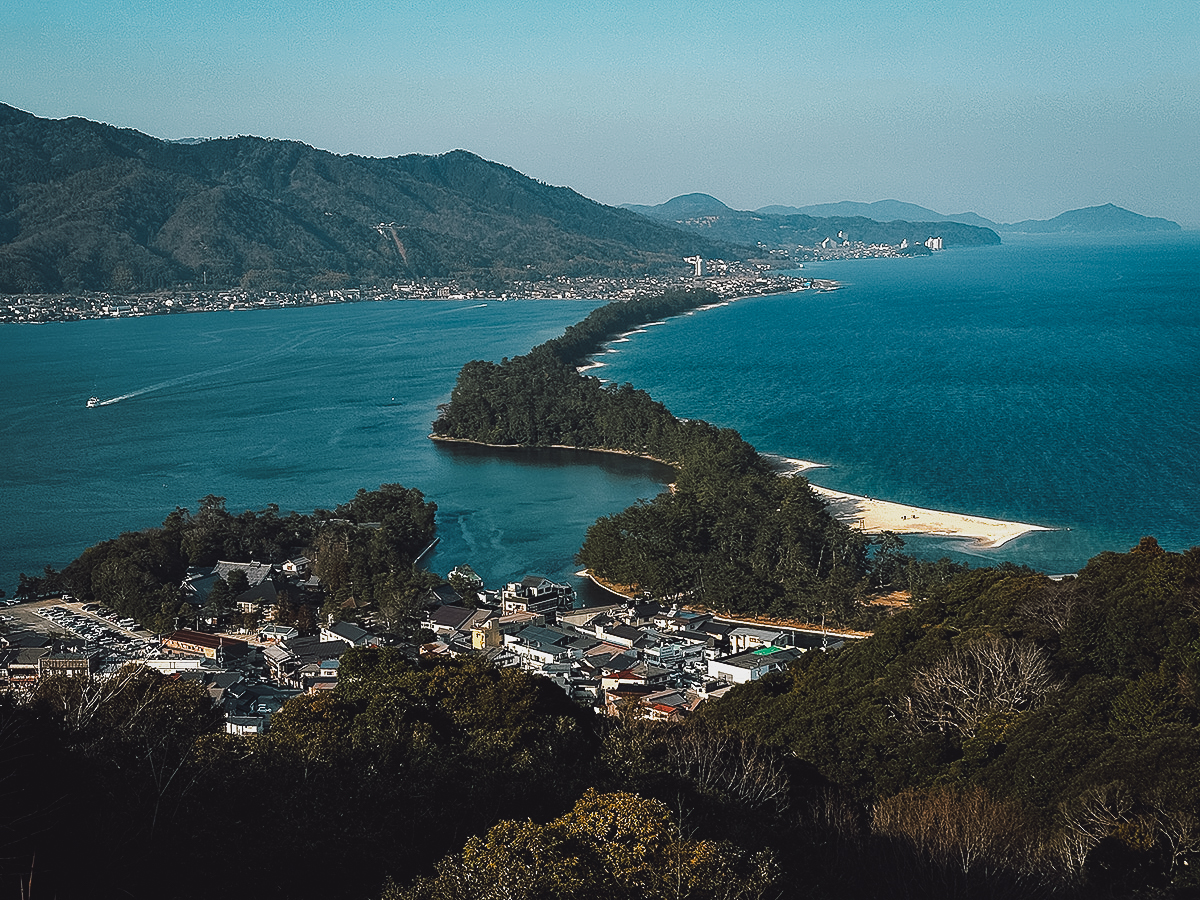
This is the view from Kasamatsu Park. In my opinion, the view isn’t as interesting from here but you do get a better appreciation for the sandbar’s length from Kasamatsu Park.
Based on what I’ve read, Kasamatsu Park is the birthplace of the matanozoki viewing tradition[4]. Unfortunately, there isn’t as much to do here other than the view.
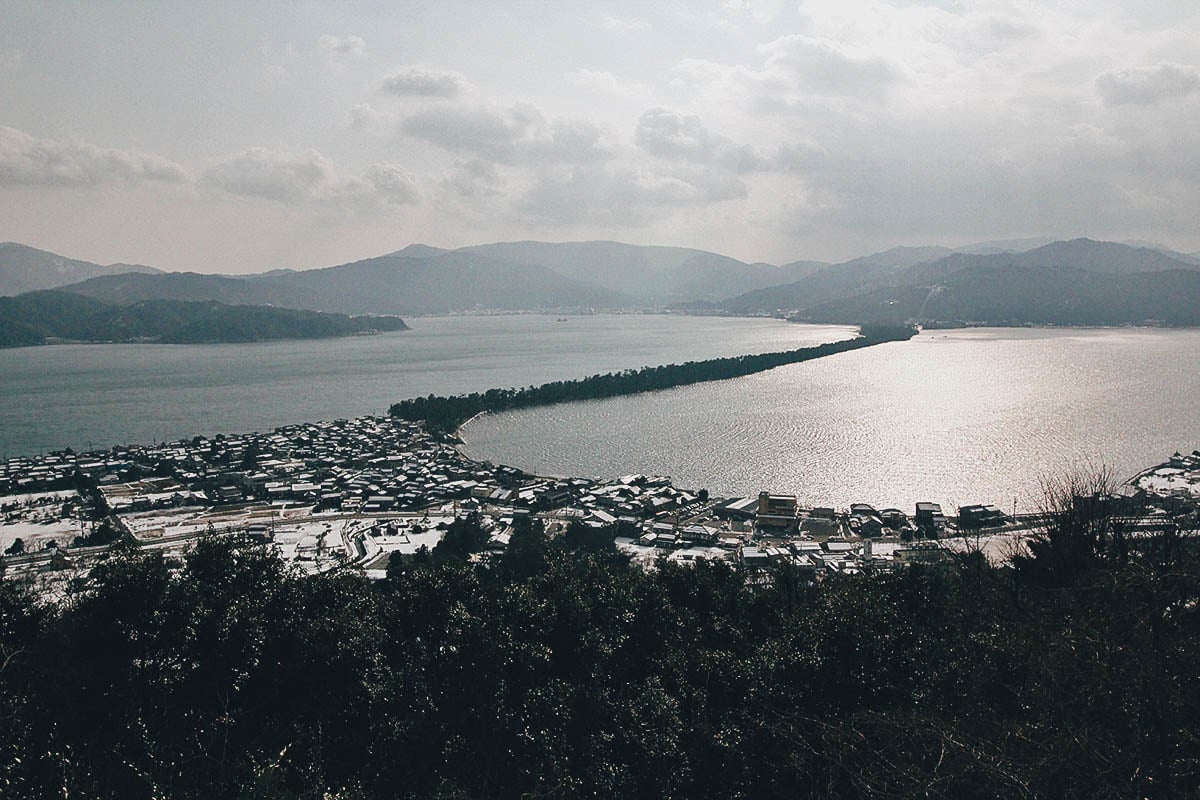
Walk or Bike Across the Sandbar
Getting bird’s eye views of the sandbar is the main reason why people visit Amanohashidate, but walking from one end to the other was the highlight for me. It’s a pleasant stroll through pine trees, sand, and sweeping ocean views. There’s even a small shrine – Amanohashidate Shrine – on the sandbar close to the south side.
It took me around 45 minutes to cross on foot but you can rent a bicycle if you prefer. There are rental shops on either end of the sandbar, and you can rent one for roundtrip or one-way use. There are plenty of benches along the way if you’d like to stop and rest and take in the view.
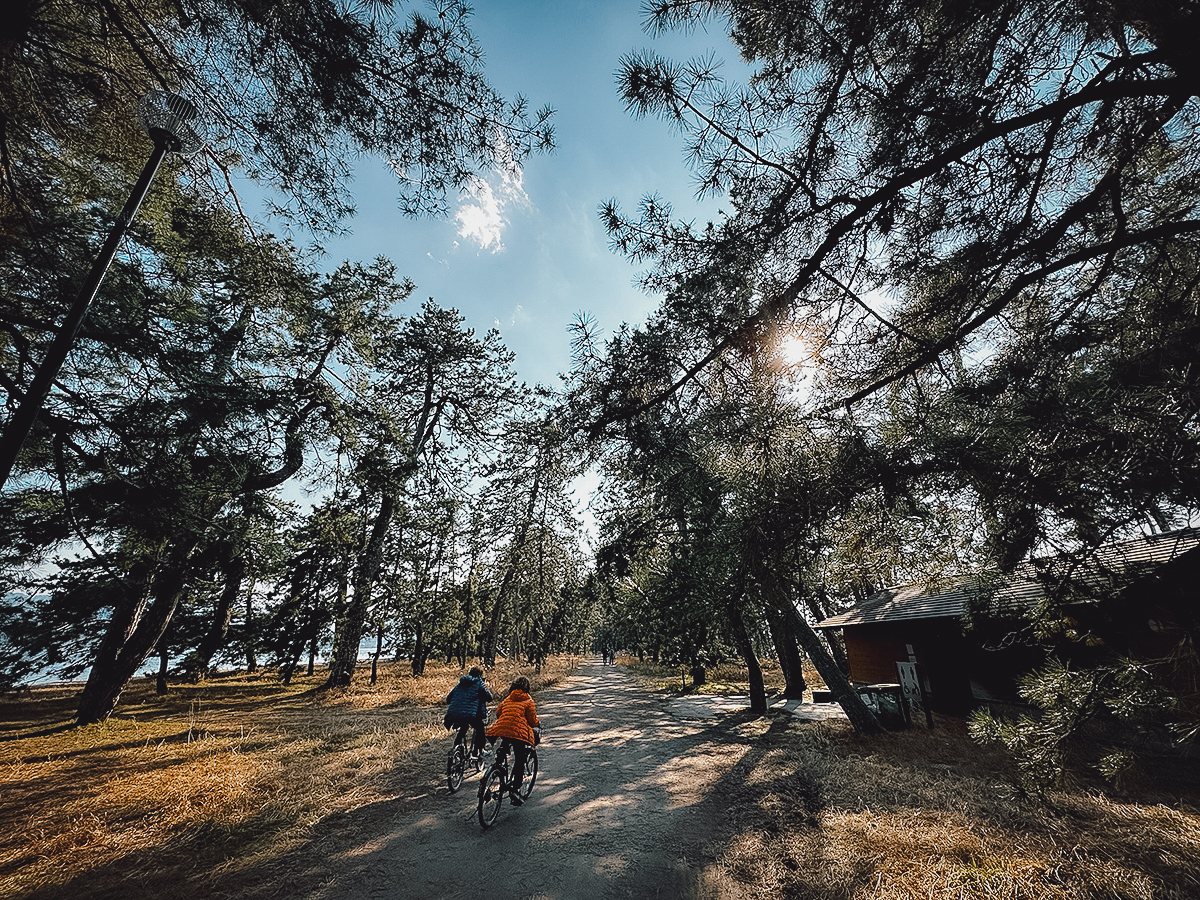
Feed Seagulls From a Ferry
If you’d rather not walk or ride a bike, a third option would be to cross the bay on a ferry. A sightseeing ferry service runs between Amanohashidate and Ichinomiya boat docks from around 9am till 5pm daily. Click on the link for the ferry schedule.
The seagulls seem to be quite used to tourists as many will fly close to the boat, close enough to be fed by hand.
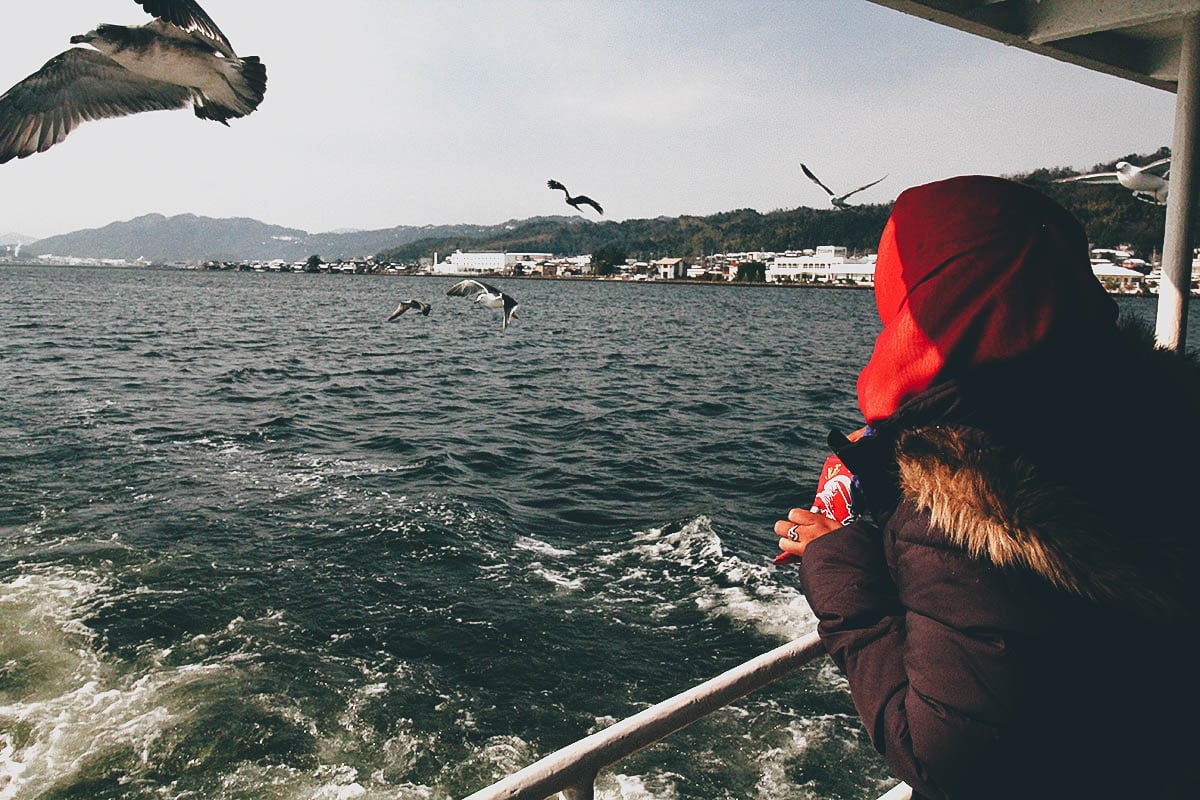
Explore Ine
This was one of the reasons why I wanted to stay the night in Amanohashidate – to have more time to explore the charming fishing village of Ine.
Located around an hour north of Amanohashidate Station by bus, Ine is known for these traditional waterfront houses called funaya. Instead of cars, the first floor of these houses are used as garages for boats.
As pretty as it is, Ine is a sleepy town without much to do, but visitors can take sightseeing cruises around the bay for a better view of the funaya.
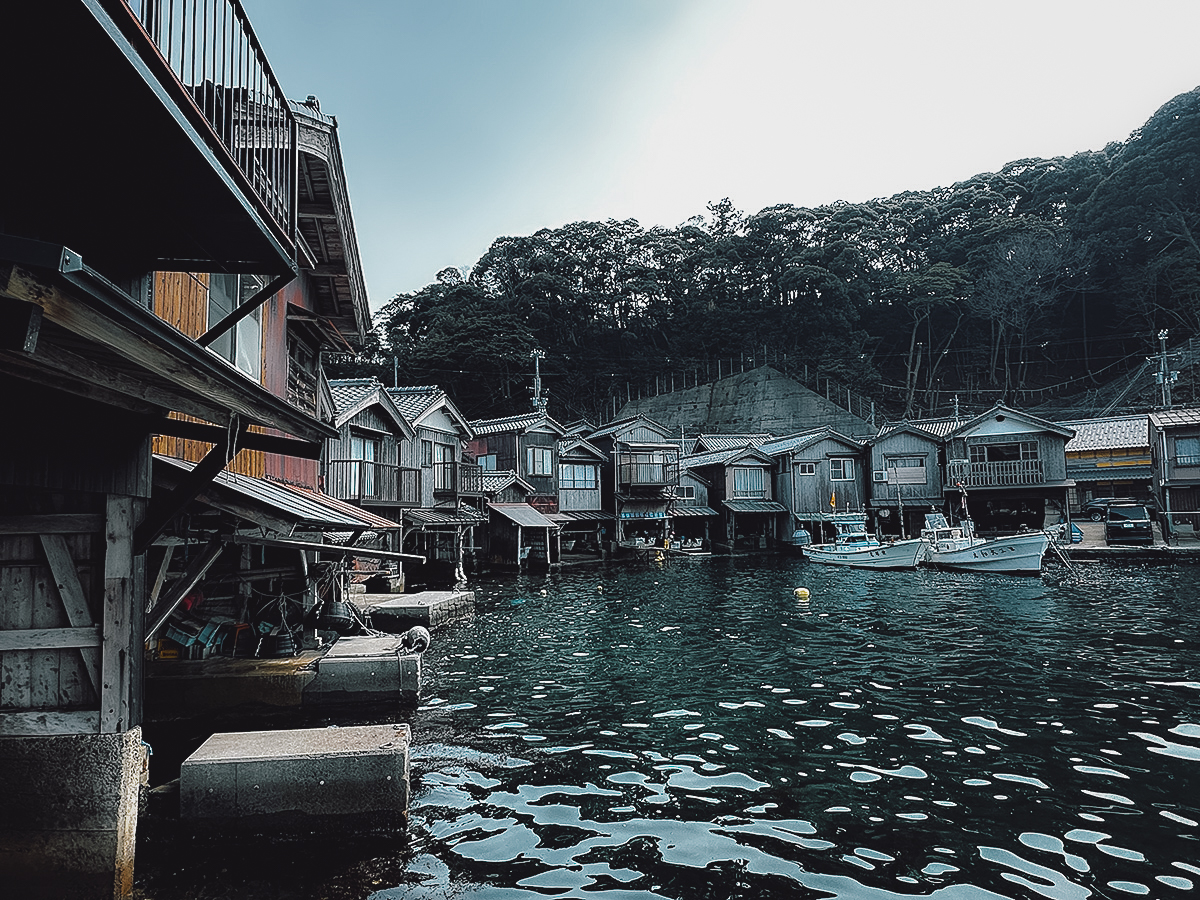
Visit a Temple
You’re never too far away from a temple or shrine in Japan, and Amanohashidate is no exception. On the Monju side, you can visit Chion-ji (pictured below). Cross the sandbar to the north and you’ll find Motoise Kono Jinja.
If those aren’t enough, then you can take a shuttle bus from Kasamatsu Park to Naria-ji, a Shingon temple nestled in the mountains on the northern side of the sandbar.
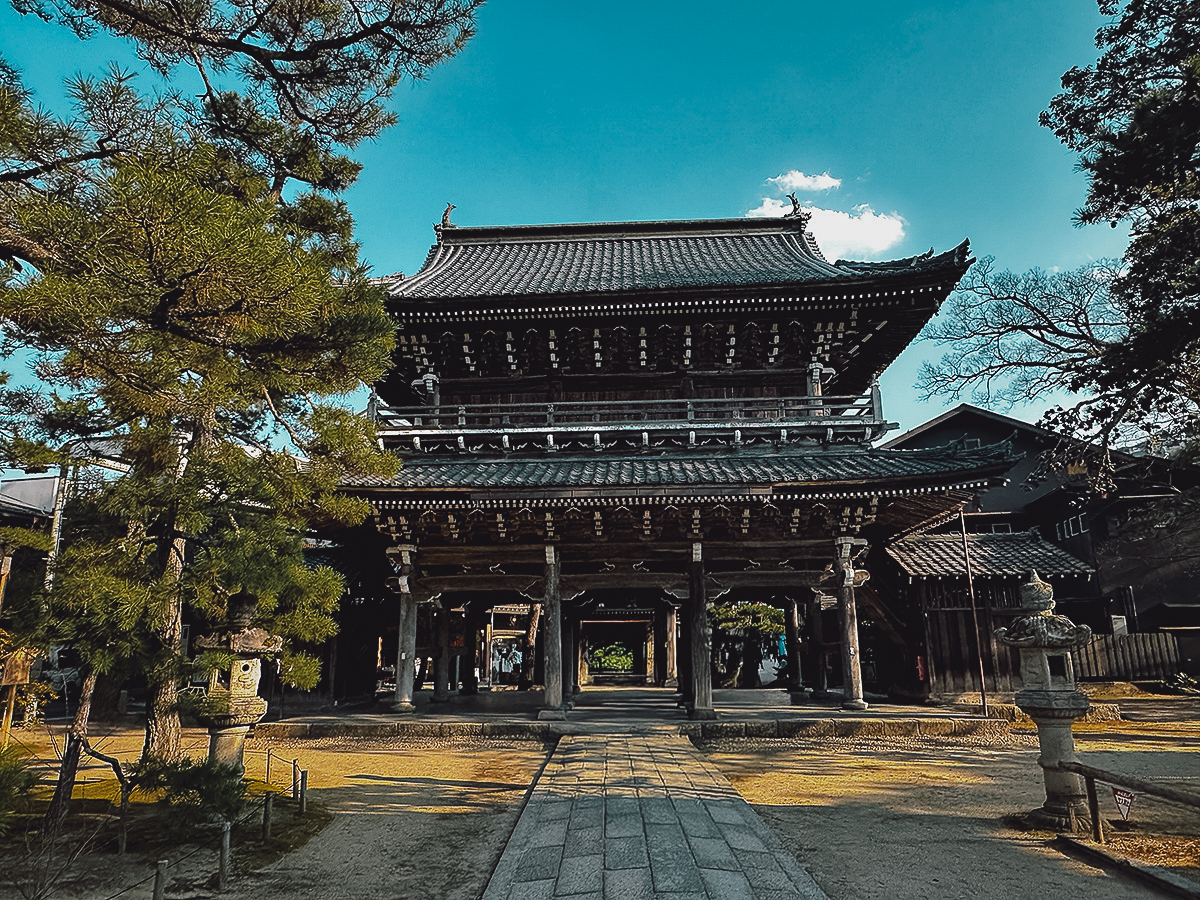
VISIT AMANOHASHIDATE FAQs
Is Amanohashidate worth visiting?
To be honest, I don’t think the view of the sandbar is all that spectacular, but I did enjoy the area a lot. It’s a small town with small-town vibes that offers a pleasant escape from overcrowded Kyoto. I really enjoyed walking on the sandbar as well.
If you plan on visiting Kinosaki Onsen, then Amanohashidate is a worthwhile stop. But on its own, I wouldn’t call it a must-visit.
Should I go to Amanohashidate Viewland or Kasamatsu Park?
Amanohashidate Viewland. Not only does it offer a better view of the sandbar in my opinion, but there’s a lot more to do there as well.
Should I spend the night in Amanohashidate?
If your only goal is to see the sandbar, then not really, as you can easily visit Amanohashidate on a day trip from Kyoto. But if you’d like enough time to explore Ine as well, and perhaps continue on to Kinosaki Onsen, then staying the night is a good idea.
THE FINAL SAY
First-time visitors will have their hands full exploring Kyoto, but if you’re staying long enough, then you may want to take a day trip or two. Located just two hours north of the former capital, Amanohashidate is easy to visit and gives you a chance to see more of the prefecture.
Disclosure
This Amanohashidate travel guide contains affiliate links, meaning we’ll earn a small commission if you make a booking or purchase at no added cost to you. As always, we only recommend products and services that we use ourselves and firmly believe in. We really appreciate your support as it helps us make more of these free travel guides. Arigato gozaimasu!
References
1. The story of Amanohashidate. Tango Kairiku Kotsu Co., Ltd.
2. Amanohashidate. Amanohashidate & Kinosaki Onsen Tourist Information.
3. Amanohashidate Sandbar. japan-guide.com.
4. Amanohashidate Kasamatsu Park. Good Luck Trip.
